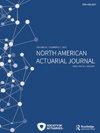Basis Risk in Index-Based Longevity Hedges: A Guide for Longevity Hedgers
IF 1.6
Q3 BUSINESS, FINANCE
引用次数: 22
Abstract
This article considers the assessment of longevity basis risk in the context of a general index-based hedge. We develop a detailed framework for measuring the impact of a hedge on regulatory or economic capital that takes population basis risk explicitly into account. The framework is set up in a way that accommodates a variety of regulatory regimes such as Solvency II as well as local actuarial practice, attempting, therefore, to bridge the gap between academia and practice. This is followed by a detailed analysis of the capital relief resulting from a hedge that uses a call spread as the hedging instrument. We find that the impact of population basis risk on capital relief (expressed in terms of a “haircut” relative to the case with no population basis risk) depends strongly on the exhaustion point of the hedge instrument. In particular, in a Solvency II setting, if the exhaustion point lies well below the 99.5% Value-at-Risk, population basis risk has a negligible impact and the haircut is zero.基于指数的长期套期保值中的基差风险:长期套期保值指南
本文考虑了在一般基于指数的套期保值背景下的长寿基础风险评估。我们开发了一个详细的框架来衡量对冲对监管资本或经济资本的影响,该框架明确考虑了基于人口的风险。该框架以适应各种监管制度(如Solvency II)以及当地精算实践的方式建立,因此试图弥合学术界与实践之间的差距。接下来是对使用看涨价差作为对冲工具的对冲所产生的资本减免的详细分析。我们发现,人口基础风险对资本减免的影响(以相对于没有人口基础风险的情况的“削发”表示)强烈依赖于对冲工具的耗尽点。特别是,在偿付能力II设置中,如果耗尽点远低于99.5%的风险价值,则人口基础风险的影响可以忽略不计,并且理发为零。
本文章由计算机程序翻译,如有差异,请以英文原文为准。
求助全文
约1分钟内获得全文
求助全文

 求助内容:
求助内容: 应助结果提醒方式:
应助结果提醒方式:


